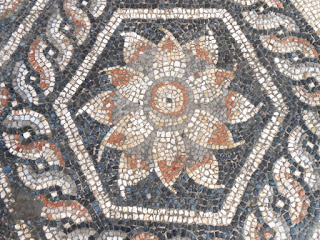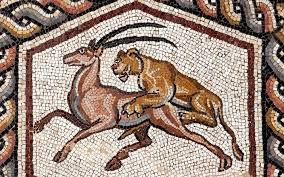 | It was around this time, 480 B.C., that the Battle of Salamis took place. Following successful invasions by the Persians, the Greek fleet had withdrawn to Salamis and they were outnumbered. At this point Themistocles, a politician and general, convinced Greek allies to build a fleet and fight. |
Wednesday, May 26, 2021
Relics from the time of the Battle of Salamis uncovered
Tuesday, May 25, 2021
The Aqueduct of Constantinople
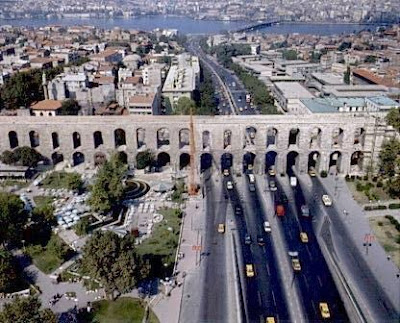 | The longest aqueduct of all time, the Aqueduct of Valens is 429 km long and supplied Constantinople with water. In AD 324, the Roman Emperor Constantine the Great made Constantinople the new capital of the Roman Empire. The aqueduct system worked for more than 700 years, until at least the 12th century. | 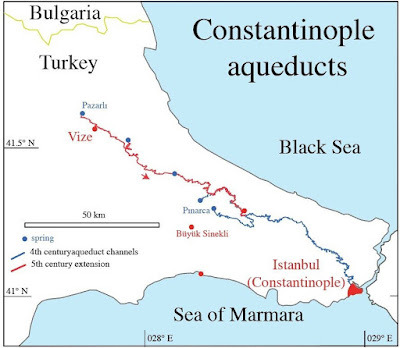 |
 |
Sunday, May 23, 2021
Empress Livia Drusilla
| Empress Livia Drusilla was Roman empress from 27 BC to 14 AD as the wife of Emperor Augustus. She was known as Julia Augusta after her formal adoption into the Julian family in AD 14. "Livia: a blight upon the nation as a mother, a blight upon the house of Caesar as a stepmother". That was Tacitus's assessment of Livia Drusilla. The historian elaborated that Livia put her husband, Emperor Augustus, under her control, and banished or had killed every potential heir to the throne in order to promote her own son, the bizzare Tiberius, as his successor. |
| In 42 AD Livia was deified by Claudius. | After Augustus died in 14 AD, Tiberius became emperor. Livia continued to exert political influence as the mother of the emperor. She was the great-grandmother of the emperor Caligula, grandmother of the emperor Claudius, and the great-great-grandmother of the emperor Nero. Livia is depicted as having great influence, to the extent where she "had the aged Augustus firmly under control." She died in 29 AD. |
Friday, May 21, 2021
Gladiators - Heroes of the Colosseum
 | A new exhibition has opened at the Archaeological Museum Hamburg, "Gladiators - Heroes of the Colosseum." The first documented gladiator fights took place in Rome in 264 BC. Descendants of a deceased person had three pairs of slaves compete against each other in the honor of the dearly departed. Typically, the fight would happen in a marketplace. These private battles of nobility became increasingly popular among citizens of ancient Rome. Under Augustus (63 BC - 14 AD), games were allowed only during a few specific days of the year. |  |
 | Gladiators were not always prisoners or slaves. Gladiator schools ensured a supply of highly trained fighters and many free citizens also joined. The games offered a chance for the most successful warriors to earn redemption, wealth and freedom. The typical schedule of a fight day started around noon, with executions of criminals sentenced to death. Afterward, circus acts would sometimes take the stage. After a few additional fights, the gladiators were presented as the main act. Women also fought against each other. This was officially banned in the year 200. |
 | A gladiator was an armed combatant who entertained audiences in the Roman Republic and Roman Empire. Most were slaves, socially marginalized, and segregated even in death. The origin of gladiatorial combat is thought to be the 3rd century BC, and thereafter it rapidly became an essential feature of social life in the Roman world. Its popularity led to ever more lavish and costly games. The games lasted for nearly a thousand years, peaking between the 1st century BC and the 2nd century AD. The games declined during the early 5th century after the adoption of Christianity. |  The average age of those killed in the arena was around 28. Few gladiators survived more than ten matches. |
 | The person who presided over the games was called the editor. He could be the emperor, a senator, or other political figure and made the final decision about the fate of the gladiators in the arena. To make sure the loser wasn’t pretending to be dead, an attendant dressed as Mercury would touch him with a hot iron wand. If they were still alive, another attendant, dressed as Charon, would hit him with a mallet. |  |
 | If a gladiator repeatedly survived the arena and lived long enough to retire, they were given a symbolic wooden training sword, or rudis, as a token of their freedom. Even when they had won their freedom, the lucrative life of the gladiator still appealed: rudiarii were gladiators who had won their freedom but chose to remain fighting in the arena. |  |
 Gladius, an early ancient Roman sword | There were many types of gladiators and each had different weapons. It was usual to pair off combatants with widely different, but more or less equivalent, equipment. Studies have shown that gladiators fought to strict rules and barefooted. During combat musicians performed and altered tempo to match that of the combat. |  Roman Gladiator Dagger |
 Four-pointed dagger |  Roman soldiers were taught to deploy the gladius horizontally, piercing the enemy's ribs and penetrating vital organs. | Roman iron gladiator trident. |
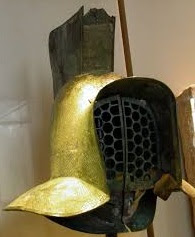 |  |  Gladiator Arm Guard |  Greaves (leg protectors) and dagger discovered at Pompeii's gladiator barracks. |
 | 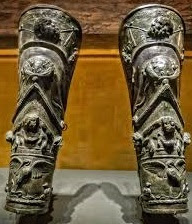 Pair of bronze greaves from the Gladiators' Barracks in Pompeii. |  |  Helmet of a murmillo. |
Tuesday, May 18, 2021
Agrippina “the Elder”
 Agrippina I (mother of Caligula) Æ Sestertius. Rome, 37-41 CE. AGRIPPINA M F MAT C CAESARIS AVGVSTI, draped bust right / S P Q R MEMORIAE AGRIPPINAE, carpentum to left, drawn by two mules. $6,400. Agrippina I (mother of Caligula) Æ Sestertius. Rome, 37-41 CE. AGRIPPINA M F MAT C CAESARIS AVGVSTI, draped bust right / S P Q R MEMORIAE AGRIPPINAE, carpentum to left, drawn by two mules. $6,400. | Born in 14 BCE, Agrippina “the Elder” was the daughter of Marcus Agrippa. Her mother was Julia, daughter of the first Roman emperor, Augustus. Agrippina married Germanicus, the adopted son of Augustus’ successor Tiberius, and in 12 CE bore the future emperor Gaius, nicknamed 'Caligula'. She spent the time following Germanicus' death in 12 AD supporting the cause of her sons Nero and Drusus Caesar. She was caught in Nero's exile in AD 29. Nero was exiled to Pontia and she was exiled to the island of Pandateria, where she would remain until her death by starvation in AD 33. |
Monday, May 17, 2021
Sunday, May 16, 2021
Mosaics of Pompeii
 | Pompeii has provided valuable insight to the Roman world and most agree it is the richest archaeological site in the world. Fine mosaics were a common feature in the villas of the town and depicted scenes from mythology, the owner’s business interests or animal scenes. They are of the highest artistic merit. |  Plato's Academy Circle |
  | 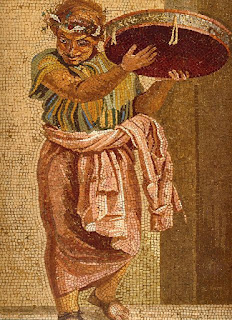 Detail of Musician with tympanon, Villa del Cicerone Detail of Musician with tympanon, Villa del Cicerone |  House of Neptune 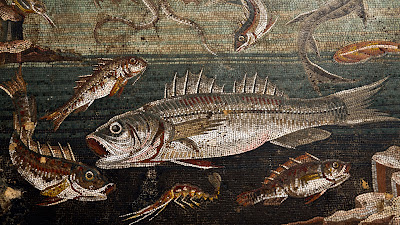 |
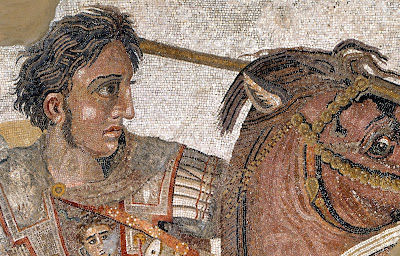 Detail Alexander the Great at the Battle of Issus |  Head of Medusa |  Detail Satyr and nymph |
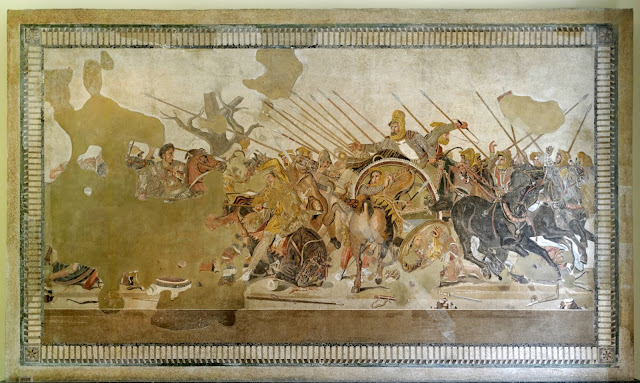 |  |
 |  | 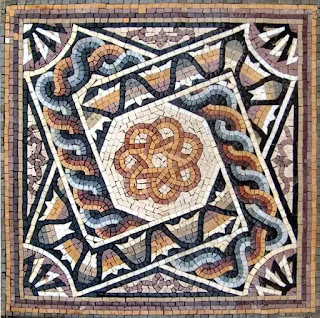 |
Subscribe to:
Comments (Atom)



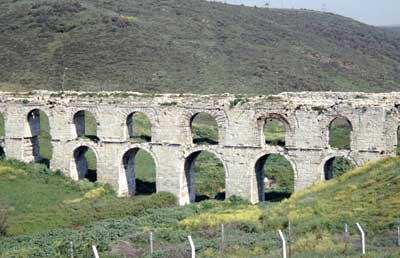
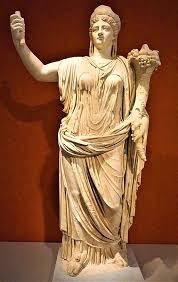


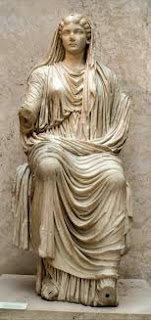
 Nike,1st century.
Nike,1st century.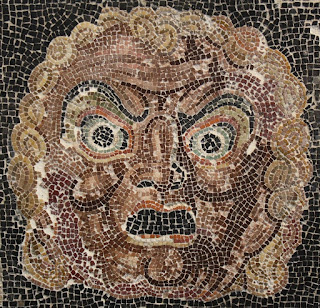 Theatre Mask.
Theatre Mask.